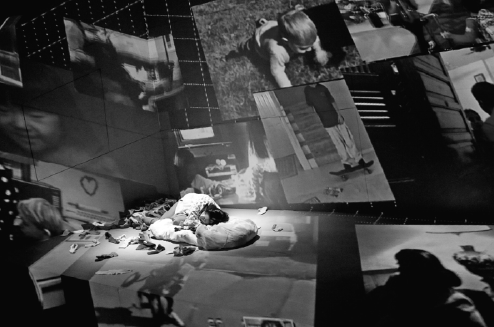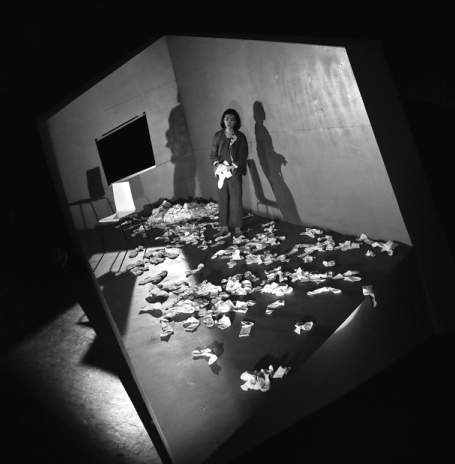AI drama thinks inside the box
A new multimedia play explores our reliance on artificial intelligence, Cheng Yuezhu reports.

At the 2017 Beijing Fringe Festival, young director Chen Ran entered a theater competition where she was asked to plan a short play within the space of 48 hours.
She had just gone through a phase of sleeping at friends' places as her own flat was unliveable due to construction work. For a week, she slept on a "really comfortable" sofa at a friend's studio.
"That week, I barely even left the sofa apart from going to the bathroom. I sat there watching TV and working on my laptop," Chen says.
"Then I found that at 3 o'clock every afternoon, a robot vacuum would turn up and clean the floor. So it presented an interesting scene, with a motionless human and a hardworking robot. The scenario is unforgettable."
When the competition presented her with an image of a girl embracing her own reflection in the mirror, she thought of the relationship between humans and artificial intelligence, which inspired her to write Dee& D-1, a 25-minute monodrama.
In the 2019 edition of the festival, joined by several theater practitioners, including writer Zhang Hang, actor Ma Zhuojun and scenographer Wang Di, she extended the short play into a full-length theater production, Approximation: Dee & D-1, which premiered at the National Theater of China on Nov 15.
Within the confined living space, the play charts the relationship between the protagonist Dee and her home AI hub, D-1. As the story unfolds, the two seem to almost redefine each other-Dee customizes D-1 to become more domesticated and help her in almost every aspect of her life.
The stage is designed as a simple room with a sloping floor, where the protagonist is depicted writhing on the floor in ennui and unease.
Although the AI hub is intangible, the role of D-1 is ubiquitously present throughout the play, and its lines are continually projected onto the walls behind Dee.
"I knew that when the dialogue spoken by the AI unit was presented as subtitles, the audience wouldn't be able to absorb all the lines at once. But I really wanted to create the feeling that the two characters were in different dimensions," Chen says.
The tilted angle of the stage was designed in a way to create an optical illusion, or at least offer a sense of illusion, according to Wang, the set designer.
Wang says the stage design was intended to present the relationship between Dee and D-1: "The entire space is D-1, in which the AI hub has conversations with Dee. We could say that Dee is continuously trapped in the cocoon of a room dominated by advanced technology."
For the first half of the play, Dee and D-1 are prevented from communicating with each other due to technical hitches, and the dialogue is presented as two interweaving monologues. In the second half of the play, they begin to converse with each other, discussing a range of everyday issues.
Chen says the play is mainly built on two theories, Marshall McLuhan's theory of understanding media as an extension of humans and Jacques Lacan's theory of the "mirror stage".
"McLuhan's theory has had a profound impact on me. In my theater works, I often deal with different kinds of digital media, the influences on people exerted by the media, and the different relationships between the media and people. This is the life we are living today.
"Lacan's statement of how infants discover who they are for the first time in the mirror seems to be very similar to how modern people are confronted with technology and digital media," she says.
There is also a feminist side to the play, where both socks and high heels are used as key forms of imagery. In one scene, the protagonist is shown to dance in one high heel, while in another, she tries to put on the precarious shoes on top of layers and layers of socks.
"It seems to me that high heels symbolize a kind of discipline imposed on women by society, and this discipline may sometimes be internalized by women themselves," Chen says.
"Socks and high heels obviously don't go together. The more socks you put on, the more difficult it is to wear those shoes. How people wrap themselves up in ever more layers is also how I imagine future society-as technology helps us to do more things, people will live more independently and need others less."


Today's Top News
- China sees growth in number of tourist trips and spending in the first half
- Xi, Nepalese president exchange congratulations on 70th anniversary of ties
- Relief efforts intensified as rain death toll mounts
- Cultural insight helps chart path to urbanization
- People's war principle drives PLA development
- SCO summit poised for fruitful outcomes































